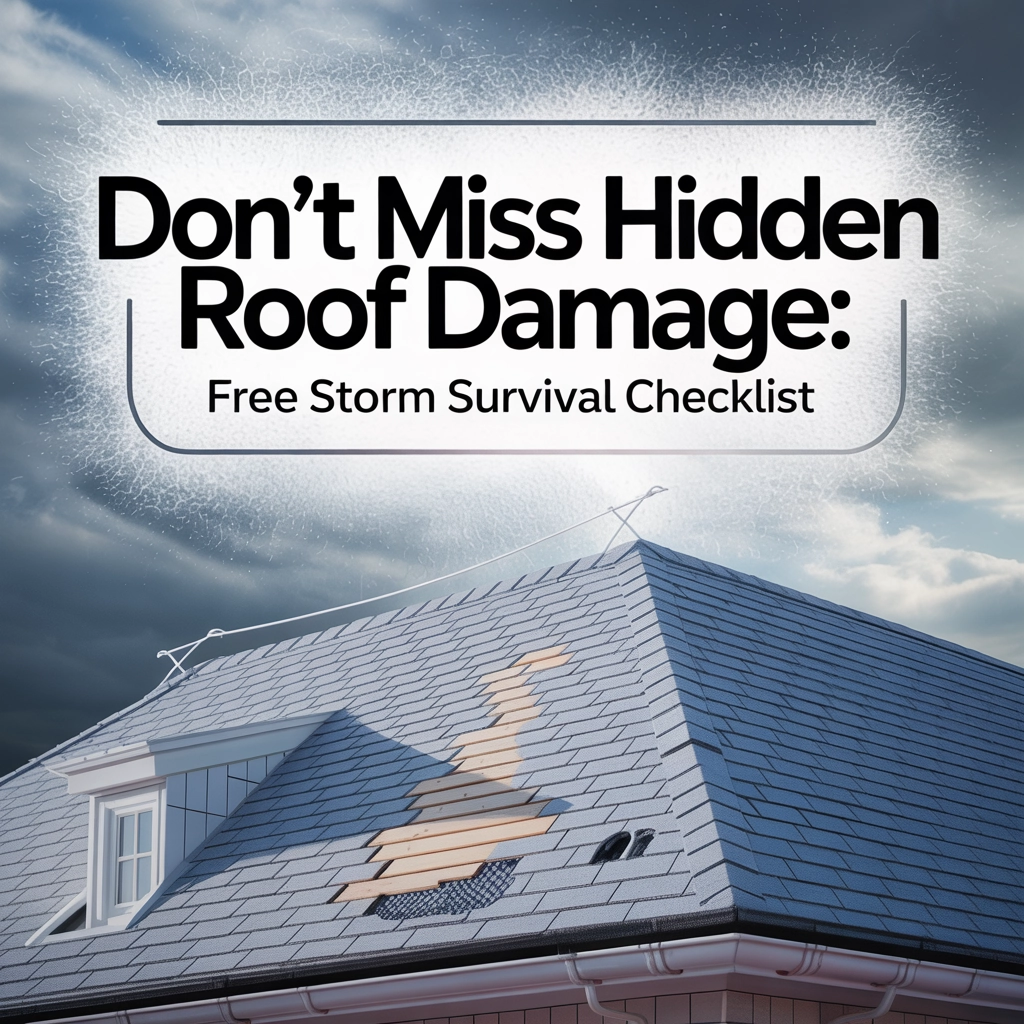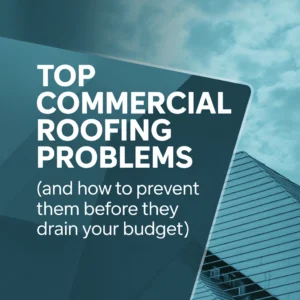Worried about your roof after a big storm? You're not alone. Every year, thousands of Charlotte homeowners face unexpected roofing repairs because they missed the early warning signs of storm damage. The truth is, some of the most destructive roof problems start small and hide in plain sight – until they suddenly become major (and expensive) headaches.
Why Hidden Roof Damage Is So Dangerous
Storm damage doesn't always announce itself with dramatic leaks or missing shingles. Often, the most serious problems begin with subtle changes that go unnoticed for weeks or months:
- Small cracks that allow moisture to seep into your underlayment
- Loose flashing that gradually pulls away from chimneys or vents
- Impact damage from hail that weakens shingles without immediately breaking them
- Wind-lifted shingles that may settle back down but have broken their seal
"The average homeowner misses about 70% of early roof damage indicators," says James Turner, owner of Best Roofing Now. "By the time water starts dripping through your ceiling, you're often looking at damage that's been developing for months."
The good news? Most of these problems are completely preventable with regular checks – especially after severe weather. That's why we've created this comprehensive storm damage checklist to help you protect your biggest investment.
Your 10-Point Storm Damage Checklist
1. Ground-Level Inspection
Start by walking around your home's perimeter. Look for:
- Shingle granules in gutters or downspouts: Excessive granule loss appears as dark sandy material and indicates shingle deterioration.
- Debris on the ground: Fallen pieces of roofing material suggest damage above.
- Dented gutters or downspouts: May indicate hail damage that has also affected your roof.
Take photos of anything suspicious – these will be valuable for insurance claims if needed.
2. Exterior Wall Check
Examine your home's exterior walls for:
- Water stains or discoloration
- Peeling paint or water damage
- Mold or mildew growth
- Damaged siding that could indicate roof overflow problems
These signs often appear when water is escaping from damaged roof areas and running down your walls.
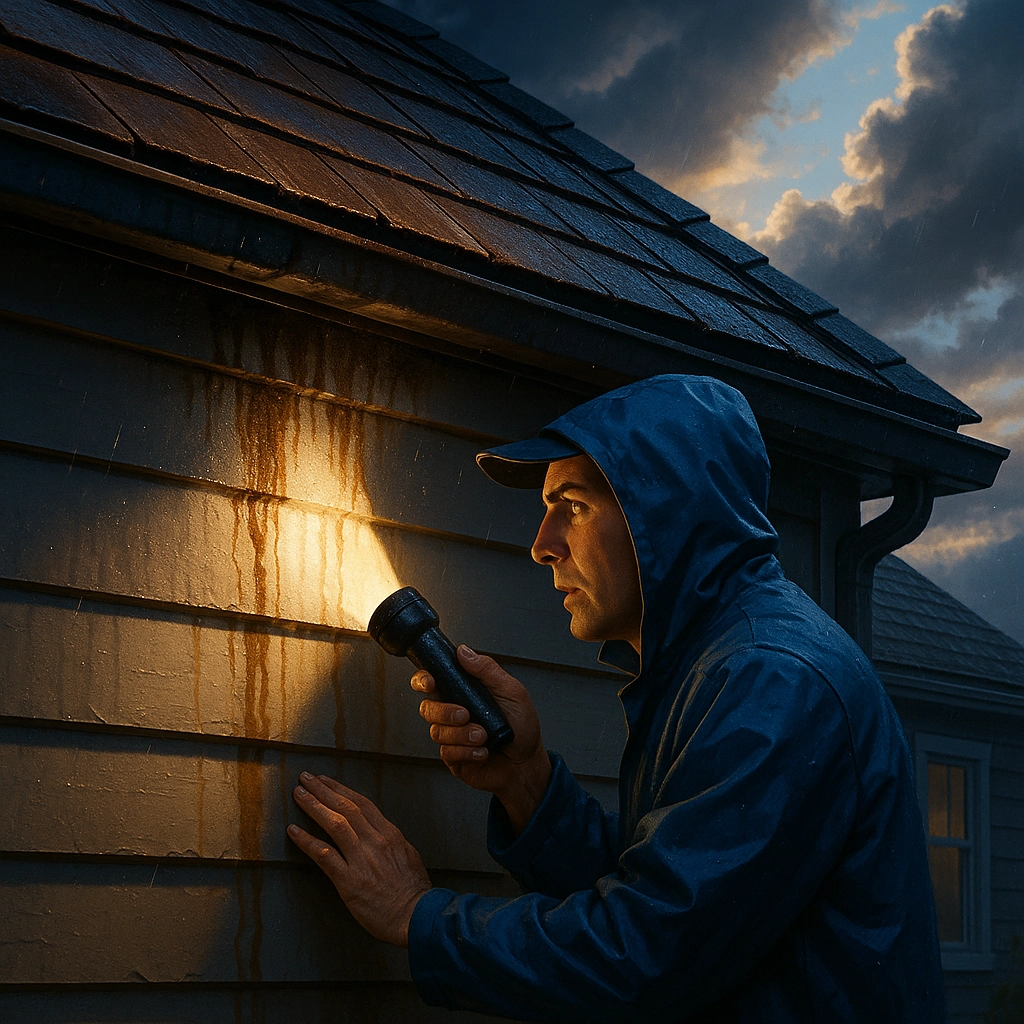
3. Attic Inspection
Your attic tells the truth about your roof's condition. Grab a flashlight and check for:
- Water stains on rafters or decking: Even small stains indicate water intrusion.
- Sunlight peeking through the roof: If light can get in, so can water.
- Sagging roof decking: This suggests structural damage from water weight.
- Wet insulation: Damp insulation loses effectiveness and promotes mold growth.
Pro tip: Do this inspection during daylight hours with the attic lights off to better spot any pinhole leaks allowing light through.
4. Shingle Assessment
If you can safely view your roof from a window, ladder, or with binoculars, look for:
- Missing shingles: Obvious gaps in your roof's surface.
- Curling or buckling shingles: Edges lifting up instead of lying flat.
- Cracked or broken shingles: Often caused by impact or aging.
- Bald spots: Areas where granules have worn away, leaving a shiny or darker appearance.
"Never underestimate the importance of shingle integrity," says our lead inspector. "A single damaged shingle can allow water to penetrate your roof system and cause thousands in structural damage."
5. Flashing Inspection
Metal flashing creates a water-resistant barrier around roof transitions and penetrations. Check for:
- Bent or damaged flashing: Around chimneys, vents, and skylights.
- Rust or corrosion: Indicates aging that compromises water resistance.
- Separated seams: Gaps where flashing pieces meet.
- Missing caulk: Areas where sealant has cracked, dried out, or gone missing.
6. Gutter System Check
Functioning gutters are essential for proper roof drainage. Inspect for:
- Sagging sections: Indicates water weight or improper attachment.
- Separation from the roofline: Gaps between gutter and fascia.
- Clogged downspouts: Preventing proper water flow.
- Overflowing during rain: Sign of blockage or inadequate sizing.
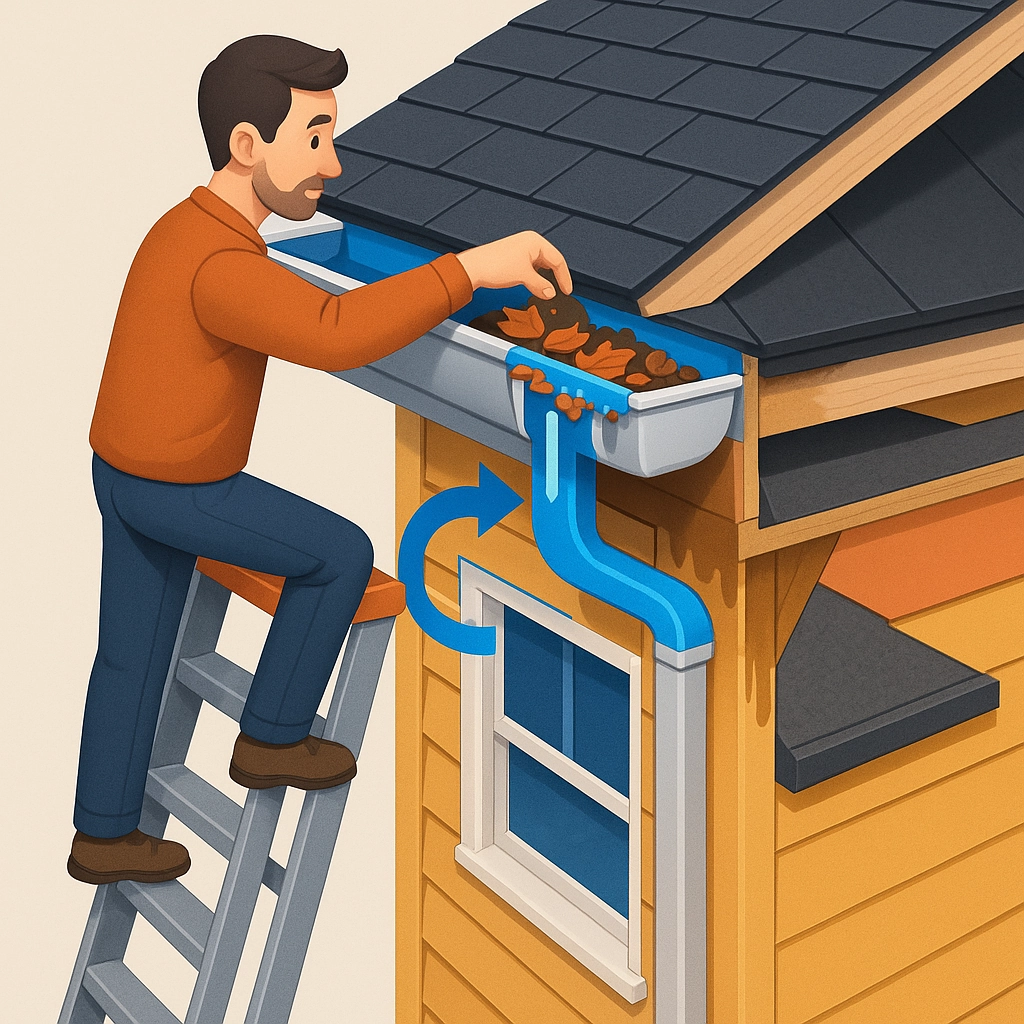
7. Interior Ceiling Examination
Your interior ceilings can reveal roof leaks before they become catastrophic:
- Water stains or discoloration: Yellow, brown, or copper colored spots.
- Peeling paint or bubbling wallpaper: Caused by moisture seepage.
- Damp spots: Especially after rain.
- Mold or mildew growth: Black spots or musty smells near ceilings.
Map these locations mentally – they'll help a professional roofer pinpoint the source of leaks, which is often not directly above the visible damage.
8. Ventilation Assessment
Proper roof ventilation prevents moisture buildup and extends shingle life:
- Blocked soffit vents: Often clogged by debris or covered by insulation.
- Damaged ridge vents: Look for dents, separations, or missing sections.
- Bent or damaged roof vents: Can allow water intrusion.
- Missing vent covers: Creates direct openings for water entry.
Restricted ventilation can lead to premature shingle failure and voided warranties, so don't overlook this crucial component.
9. Chimney Evaluation
Chimneys are common leak points. Check for:
- Cracked or missing mortar: Between brick or stone.
- Damaged chimney cap: Should be intact and securely attached.
- Rusted chimney flashing: The metal around the chimney base.
- Water stains on the chimney: Indicates potential leakage pathways.
10. Professional Documentation
If you spot potential damage:
- Photograph everything: Close-ups and wide shots of problem areas.
- Note the date of the storm: For insurance claim purposes.
- Document any interior damage: Including personal property affected.
- Save samples: If possible, keep a fallen shingle as evidence of damage.
This documentation is invaluable when filing insurance claims or discussing repairs with contractors.
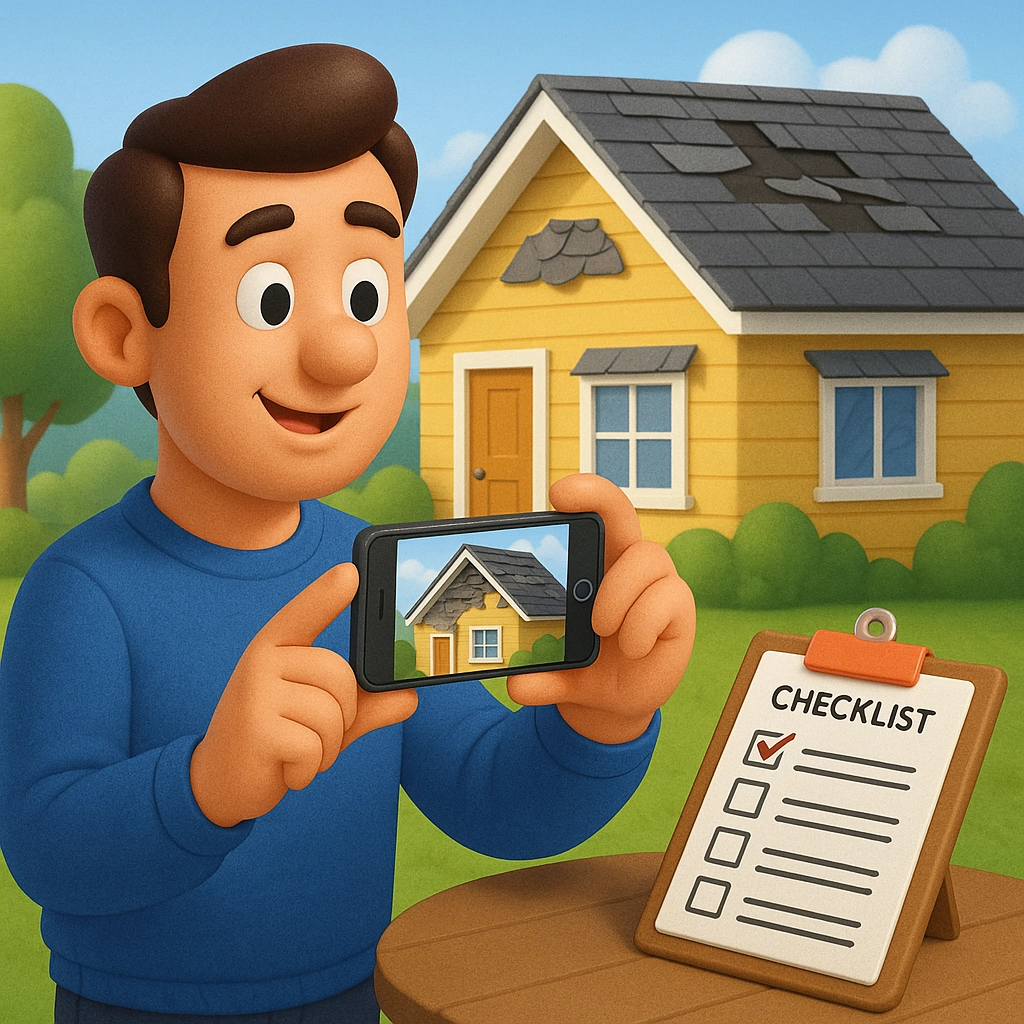
When to Call a Professional
While this DIY inspection helps identify problems, certain situations warrant immediate professional attention:
- Multiple missing or damaged shingles
- Any visible sagging in your roof
- Interior water stains or active leaks
- Large debris impact (like tree limbs)
- Hail damage (often difficult for homeowners to properly assess)
After severe weather, professional roofing companies like Best Roofing Now offer emergency roof damage assessments to prevent further damage to your home.
The True Cost of Waiting
Many homeowners delay roof inspections after storms, but this approach often backfires financially:
- Small leaks can expand rapidly, especially during subsequent storms
- Water damage to insulation reduces energy efficiency, raising utility bills
- Mold remediation often costs 3-4 times more than simple roof repairs
- Insurance may deny claims for damage that worsened due to delayed reporting
The average cost to repair a small roof leak is $300-$600, while extensive water damage can easily exceed $10,000 when you factor in interior repairs, mold remediation, and structural work.
Insurance Considerations
Most homeowner's insurance policies cover sudden, accidental damage from storms, but there are important nuances to understand:
- Damage must typically be reported within a specific timeframe (often 30-60 days)
- Insurers distinguish between damage and normal wear and tear
- Documenting the condition of your roof before and after storms strengthens claims
- Most policies have a deductible you'll need to pay before coverage kicks in
This is why proper documentation using our checklist is so valuable – it creates a clear record of storm-related damage that supports your insurance claim.
Preventative Measures for Future Storms
While you can't control the weather, you can prepare your roof to better withstand future storms:
- Schedule annual professional inspections: Identify and fix minor issues before they become major problems.
- Trim overhanging branches: Prevent tree damage during high winds.
- Clean gutters regularly: Ensure proper drainage during heavy rainfall.
- Consider impact-resistant shingles: Specially designed to withstand hail and debris.
- Ensure proper attic ventilation: Reduces moisture buildup that weakens roofing components.
At Best Roofing Now, we offer residential roofing maintenance plans designed to maximize your roof's lifespan and storm resilience.
Taking Action: Next Steps
If you've completed this checklist and found potential storm damage:
- Contact a qualified roofing professional for a thorough inspection
- Notify your insurance company about the suspected damage
- Take temporary measures (if safe) to prevent further damage, such as placing buckets under leaks
- Keep all receipts related to temporary repairs for insurance reimbursement
Remember that roof leaks never get better on their own – they only worsen with time and additional exposure to the elements.
Conclusion: Peace of Mind Through Preparation
Your roof is your home's first line of defense against the elements, but it can only protect you if you protect it. By using this checklist after storms, you're taking a proactive approach to home maintenance that can save thousands in repair costs and prevent the headaches of emergency repairs.
Don't wait until water is dripping through your ceiling to think about your roof's condition. Download our comprehensive checklist today, and make post-storm roof inspections a regular part of your home maintenance routine.


